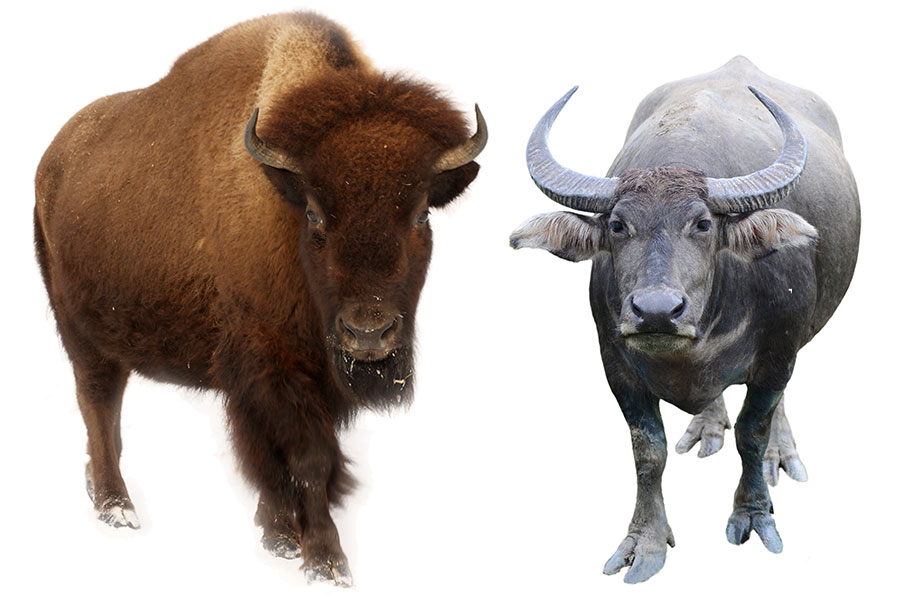Bison vs Buffalo: Understanding the Differences and Conservation Efforts

When it comes to distinguishing between bison and buffalo, many of us may find ourselves scratching our heads, unsure of the differences. Often used interchangeably in casual conversation, the terms ‘bison’ and ‘buffalo’ refer to two distinct species that differ not only in physical appearance but also in their geographical habitats. Beyond these differences, both species have faced threats of extinction due to historical overhunting and habitat destruction, leading to significant conservation efforts focused on their preservation and population recovery. This blog explores the distinctions between bison and buffalo, the challenges and successes of breeding programs aimed at their conservation, and the ongoing efforts to ensure their survival and prosperity.
Bison vs Buffalo: Key Differences
Physical Characteristics: The most straightforward way to distinguish a bison from a buffalo is by looking at their physical features. Bison, primarily found in North America, are notable for their massive heads, shaggy winter coats, and distinctive hump at their shoulders. In contrast, buffalo, which include species such as the African Cape buffalo and the Asian water buffalo, lack the shoulder hump and have a more uniform coat.
Habitat: Another key difference lies in their natural habitats. Bison roam the grasslands of North America, while buffalo are native to Africa and Asia. This geographical separation has influenced not only their physical adaptations but also their role in local ecosystems and cultures.
Conservation Efforts: Breeding Programs and Challenges
Breeding Programs for Bison and Buffalo
The late 19th and early 20th centuries marked a critical period for bison, with their numbers dwindling to near extinction due to excessive hunting and loss of habitat. Conservationists initiated breeding programs that focused on protected areas and national parks to facilitate population recovery. Similarly, for buffalo, particularly the Asian water buffalo, breeding programs have been implemented to increase their numbers, which have suffered due to habitat loss and hunting.
Challenges Faced
Genetic Diversity: A significant challenge in these breeding programs is maintaining genetic diversity. A limited gene pool can make the species more susceptible to diseases and reduce their adaptability to changing environments.
Disease Management: Both bison and buffalo are prone to various diseases, which can spread rapidly within herds. Effective disease management protocols are essential to safeguard the health of these populations, requiring continuous monitoring and research.
Habitat Restoration: The restoration of natural habitats is crucial for the success of these programs. This involves not only protecting existing lands but also rehabilitating areas that have been degraded or repurposing lands to expand their living spaces.
Successes of Conservation Efforts
Despite these challenges, conservation efforts for bison and buffalo have seen notable successes. The bison population in North America, once on the brink of extinction, has rebounded to over 500,000 individuals, thanks to concerted efforts by governments, indigenous groups, and private organizations. In parts of Asia, breeding programs have stabilized the populations of wild water buffalo, contributing to the preservation of their ecosystems.
Conclusion
The journey of bison and buffalo from the edge of extinction to their current state is a testament to the importance and impact of dedicated conservation efforts. By addressing challenges such as genetic diversity and disease management, breeding programs continue to play a critical role in the preservation of these majestic species. The success of these initiatives not only ensures the survival of bison and buffalo but also maintains the balance and health of their respective ecosystems. As we move forward, it is imperative that we continue to support and enhance these conservation efforts, ensuring that future generations will have the opportunity to witness the majesty of bison and buffalo in the wild.






